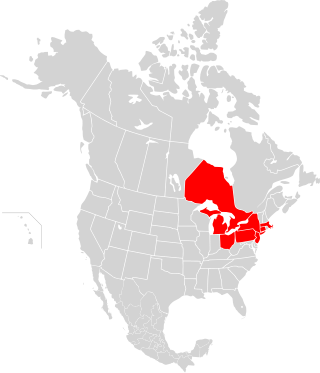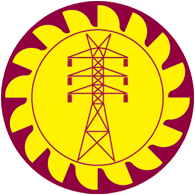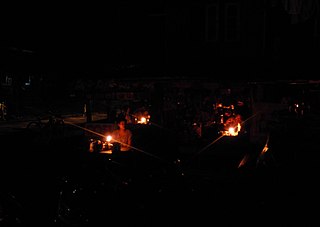An energy crisis or energy shortage is any significant bottleneck in the supply of energy resources to an economy. In literature, it often refers to one of the energy sources used at a certain time and place, in particular, those that supply national electricity grids or those used as fuel in industrial development. Population growth has led to a surge in the global demand for energy in recent years. In the 2000s, this new demand – together with Middle East tension, the falling value of the US dollar, dwindling oil reserves, concerns over peak oil, and oil price speculation – triggered the 2000s energy crisis, which saw the price of oil reach an all-time high of $147.30 per barrel ($926/m3) in 2008.

A power outage is the loss of the electrical power network supply to an end user.
A rolling blackout, also referred to as rota or rotational load shedding, rota disconnection, feeder rotation, or a rotating outage, is an intentionally engineered electrical power shutdown in which electricity delivery is stopped for non-overlapping periods of time over different parts of the distribution region. Rolling blackouts are a last-resort measure used by an electric utility company to avoid a total blackout of the power system.

The Northeast blackout of 2003 was a widespread power outage throughout parts of the Northeastern and Midwestern United States, and most parts of the Canadian province of Ontario on Thursday, August 14, 2003, beginning just after 4:10 p.m. EDT.
Electricity in Pakistan is generated, transmitted, distributed, and retail supplied by two vertically integrated public sector companies, Water and Power Development Authority (WAPDA) responsible for the production of hydroelectricity and supplied to the consumers by the power distribution companies (DISCOS) under the Pakistan Electric Power Company (PEPCO). Currently, there are 11 distribution companies and one National Transmission And Dispatch Company (NTDC) all in the public sector, and the Karachi Electric (K-Electric) for the city of Karachi and its surrounding areas. There are around 42 independent power producers (IPPs) that contribute significantly in electricity generation in Pakistan.

The Ceylon Electricity Board - CEB, is the largest electricity company in Sri Lanka. With a market share of nearly 100%, it controls all major functions of electricity generation, transmission, distribution and retailing in Sri Lanka. It is one of the only two on-grid electricity companies in the country; the other being Lanka Electricity Company (LECO). The company earned approximately Rs 204.7 billion in 2014, with a total of nearly 5.42 million consumer accounts. It is a government owned and controlled utility of Sri Lanka that takes care of the general energy facilities of the island. The Ministry of Power and Energy is the responsible ministry above the CEB. Ceylon Electricity Board (CEB), established by an CEB Act No. 17 of 1969, is under legal obligation to develop and maintain an efficient, coordinated and economical system of Electricity supply in accordance with any Licenses issue.

The Lakvijaya Power Station is the largest power station in Sri Lanka.
Several major power outages have occurred in the country of Malaysia.

Two severe power outages affected most of northern and eastern India on 30 and 31 July 2012. The 30 July 2012 blackout affected over 400 million people and was briefly the largest power outage in history by number of people affected, beating the January 2001 blackout in Northern India. The blackout on 31 July is the largest power outage in history. The outage affected more than 620 million people, about 9% of the world population, or half of India's population, spread across 22 states in Northern, Eastern, and Northeast India. An estimated 32 gigawatts of generating capacity was taken offline. Of the affected population, 320 million initially had power, while the rest lacked direct access. Electric service was restored in the affected locations between 31 July and 1 August 2012.

In Ghana, dumsor is a persistent, irregular, and unpredictable electric power outage. It is usually caused by a power supply shortage.
The South Australian blackout of 2016 was a widespread power outage in South Australia that occurred as a result of storm damage to electricity transmission infrastructure on 28 September 2016. The cascading failure of the electricity transmission network resulted in almost the entire state losing its electricity supply, affecting 850,000 SA customers. Kangaroo Island did not lose its supply, as the Kangaroo Island power station had been built to supply the island for the contingency of a failure in the power cable under the Backstairs Passage.

The South African energy crisis or load shedding is an ongoing period of widespread national blackouts of electricity supply. It began in the later months of 2007 towards the end of Thabo Mbeki's second term as president, and continues to the present. The South African government-owned national power utility, and primary power generator, Eskom, and various parliamentarians attributed these rolling blackouts to insufficient generation capacity.

Nationwide recurring electrical blackouts in Venezuela began in March 2019. Experts and state-run Corpoelec sources attribute the electricity shortages to lack of maintenance and to a lack of technical expertise in the country resulting from a brain drain; Nicolás Maduro's administration attributes them to sabotage. Since March, various nationwide blackouts occurred in the country.
Venezuela has experienced a marked deficit in the generation of electrical energy. The immediate cause of the energy crisis was a prolonged drought that caused the water in the reservoir of the Simón Bolívar Hydroelectric Plant to reach very low levels. Although various measures were taken to overcome the crisis, one of the most controversial was the implementation of a program of electrical rationing throughout the country, except in the capital Caracas, which was ultimately officially suspended in June 2010, due to the recovery of reservoirs due to the rains, and not to interrupt the transmission of the 2010 FIFA World Cup. Power cuts have continued to occur in the interior of the country, although with less frequency and duration, this time driven by failures in other parts of the system. The situation of "electrical emergency" decreed by the government on 21 December 2009 was suspended on 30 November 2010; however, on 14 May 2011, after the country experienced two national blackouts, the government of Hugo Chávez announced a temporary rationing plan and acknowledged that the electricity system continued to face "generation weaknesses" that they did not expect to surpass until end the year.
The 2019 Sri Lanka electricity crisis was a crisis which happened nearly a month from 18 March to 10 April 2019 faced by Sri Lanka caused by a severe drought that depleted water levels at hydroelectric plants. Sri Lanka experienced rolling blackouts for three to five hours per day except on Sundays in all parts of the island nation at different time schedules that started from 24 March 2019 to present. This is regarded as one of the worst blackouts confronted in Sri Lanka since 2016 and the longest ever blackout recorded in history of the country. However it was revealed that the main electricity providing institution Ceylon Electricity Board had restricted the power supply to almost all regions of the country without proper prior notice and implemented a time schedule unofficially from 24 March 2019. However the Ministry of Power and Renewable Energy revealed that it didn't grant and approve permission to CEB to impose power cuts.
The 2020 Sri Lankan blackouts were a series of electrical blackouts that occurred on 17 August 2020, beginning around 12.30 pm SLST (UTC+5:30) and lasting over seven hours. The nationwide blackouts occurred due to a transmission technical failure at the Kerawalapitiya Grid-Sub station. The Ceylon Electricity Board announced that the cause of the blackout had not yet been determined, describing it as an unspecified failure. The Ministry of Power stated that a special committee had been appointed to investigate the root cause behind the blackout.

In February 2021, the state of Texas suffered a major power crisis, which came about during three severe winter storms sweeping across the United States on February 10–11, 13–17, and 15–20. The storms triggered the worst energy infrastructure failure in Texas state history, leading to shortages of water, food, and heat. More than 4.5 million homes and businesses were left without power, some for several days. At least 246 people were killed directly or indirectly, with some estimates as high as 702 killed as a result of the crisis.
The 2021 Lebanese blackout was a power outage in Lebanon that started on 9 October 2021, after two of the country's power plants shut down when they ran out of diesel fuel. The two power stations provided 40% of Lebanon's electricity. Due to this, the power grid was shut down nationwide.
The 2023 Pakistan blackout was a power outage that occurred across Pakistan on 23 January 2023. This was the second major grid breakdown in Pakistan in 2 years. In majority of the regions, the blackout lasted more than 12 hours while in some areas it lasted even longer than 12 hours.








